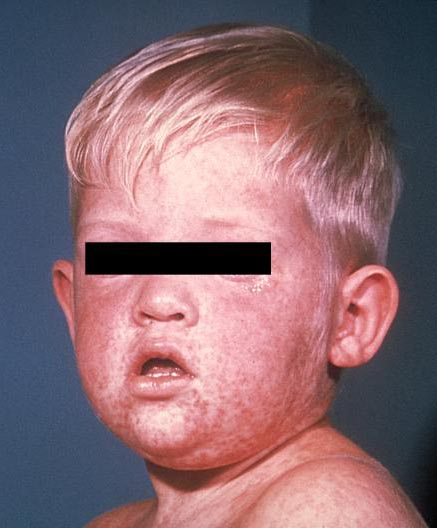
Measles erupts in Florida school where 11% of kids are unvaccinated
Over 100 children at the school are susceptible to virus.
 arstechnica.com
arstechnica.com
Measles erupts in Florida school where 11% of kids are unvaccinated
Over 100 children at the school are susceptible to virus.
BETH MOLE - 2/19/2024, 6:14 PM
Face of boy after three days with measles rash.
CDC
429
Florida health officials on Sunday announced an investigation into a cluster of measles cases at an elementary school in the Fort Lauderdale area with a low vaccination rate, a scenario health experts fear will become more and more common amid slipping vaccination rates nationwide.
On Friday, Broward County Public School reported a confirmed case of measles in a student at Manatee Bay Elementary School in the city of Weston. A local CBS affiliate reported that the case was in a third-grade student who had not recently traveled. On Saturday, the school system announced that three additional cases at the same school had been reported, bringing the current reported total to four cases.
On Sunday, the Florida Department of Health in Broward County (DOH-Broward) released a health advisory about the cases and announced it was opening an investigation to track contacts at risk of infection.
At Manatee Bay Elementary School, the number of children at risk could be over 100 students. According to a Broward County vaccine study reported by the local CBS outlet, only 89.31 percent of students at Manatee Bay Elementary School were fully immunized in the 2023/2024 school year, which is significantly lower than the target vaccination coverage of 95 percent. The school currently has 1,067 students enrolled, suggesting that up to 114 students are vulnerable to the infection based on their vaccination status.
Measles is one of the most contagious viruses known. It spreads via respiratory and airborne transmission. The virus can linger in air space for up to two hours after an infected person has been in an area. People who are not vaccinated or have compromised immune systems are susceptible, and up to 90 percent of susceptible people exposed to the virus will become infected. Measles symptoms typically begin around eight to 14 days after exposure, but the disease can incubate for up to 21 days. The symptoms begin as a high fever, runny nose, red and watery eyes, and a cough before the telltale rash develops. Infected people can be contagious from four days before the rash develops through four days after the rash appears, according to the Centers for Disease Control and Prevention. About 1 in 5 unvaccinated people with measles are hospitalized, the CDC adds, while 1 in 20 infected children develop pneumonia and up to 3 in 1,000 children die of the infection.
Those who are not immunocompromised and are fully vaccinated against measles (who have received two doses of the Measles, Mumps, and Rubella (MMR) vaccine) are generally not considered at risk. The two doses are about 97 percent effective at preventing measles, and protection is considered to be life-long.
The DOH-Broward said it is now "identifying susceptible contacts that may be candidates for post-exposure prophylaxis through MMR or immunoglobulin."
While the risk of measles is generally low in the US—the country declared it eliminated in 2000—the threat of large outbreaks is growing as vaccination rates slip. Many cases in the US are linked to travel from countries where the virus still circulates. But, if a travel-related case lands in a pocket with low vaccination coverage, the virus can take off. Such was the case in 2019, when the country tallied 1,274 measles cases and nearly lost its elimination status.
Health officials typically consider vaccination coverage of 95 percent or greater sufficient to protect from ongoing transmission. In the years since the COVID-19 pandemic began, vaccination rates among US kindergarteners have slipped to 93 percent, and vaccination exemptions reached an all-time high in the latest data from the 2022-2023 school year. There are now at least 10 states that have vaccination exemption rates above 5 percent, meaning that even if every non-exempt child is vaccinated, those states will not have enough coverage to reach the 95 percent target.
The CDC has tallied 20 measles cases in the US so far this year. But that is the tally as of February 15; it does not include any of the Florida cases reported since Friday. In 2023, there were 58 measles cases reported to the CDC.
This story was updated to include additional information about measles infection outcomes.
 at least it's not ringworm or head lice ya'll know how them cacs be having crazy ass shyt...
at least it's not ringworm or head lice ya'll know how them cacs be having crazy ass shyt... im not in grade school so why would this apply to me?
im not in grade school so why would this apply to me?